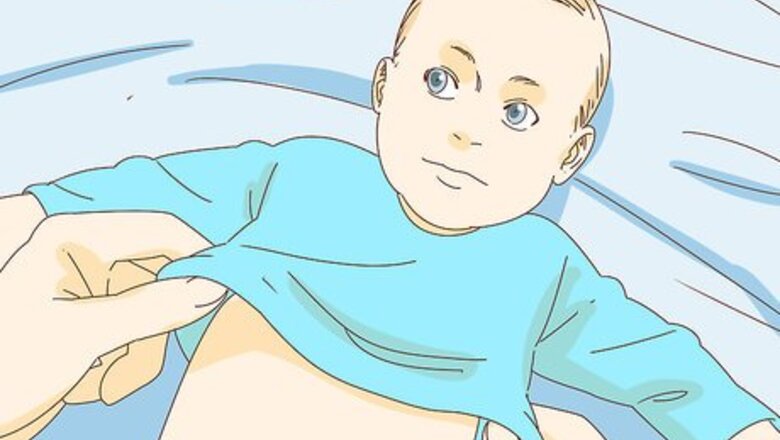
views
Choosing Appropriate Layers
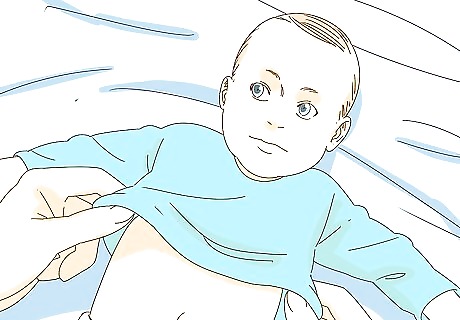
Dress your baby in 1 layer of clothing. Babies can quickly overheat, so it is important to dress them lightly. Choose just 1 layer of clothing to dress your baby in, such as a 1-piece sleeping suit or a pair of pyjamas. If possible, choose a naturally breathable fabric such as cotton, linen, or wool. Check the label of clothing items to determine the fabric. If it’s a cold night, choose a light but warm layer, such as merino wool.
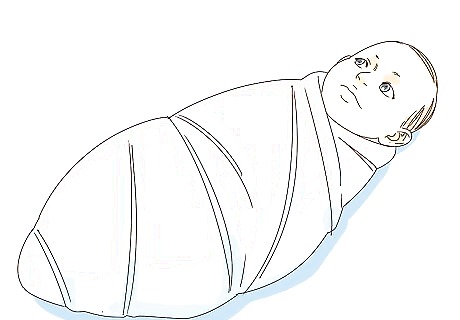
Place your baby in a swaddle if they wriggle a lot. Swaddle your baby in a swaddle blanket to add extra warmth and to help them to feel calm. Whilst you shouldn’t place regular blankets over a newborn, it is fine to wrap them in a swaddle blanket, as this can’t end up over their face. A swaddle is a piece of fabric that you can wrap around your baby. You can make swaddle blankets yourself or buy them from a store.
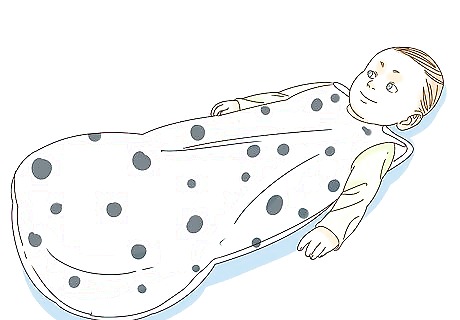
Dress your baby in a baby sleeping bag if it's cold. If the air feels cold to you, it will likely feel the same to your baby. Place your baby inside a baby sleeping bag, position their arms inside the armholes, and then do up the zip or buttons. These also help to promote uninterrupted sleep. Never use an adult or child sleeping bag. It is important to choose a purpose-made baby sleeping bag to keep your newborn safe in bed.
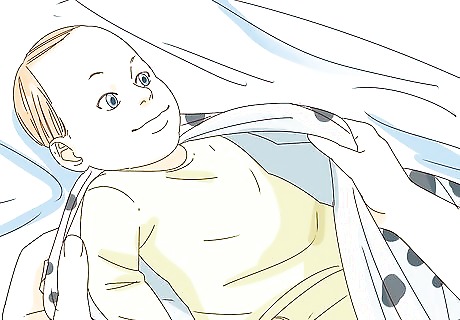
Remove a layer if your baby is sweating. Each time you check your baby, feel their skin to monitor their temperature. If they feel hot to touch or are sweating, remove 1 layer of fabric to help cool them down. This is important, as newborn babies can’t monitor their own temperature very well. For example, if your baby is sweating, remove their swaddle or sleeping bag. Only remove 1 layer at a time to ensure that your baby doesn’t get cold.
Keeping Safe
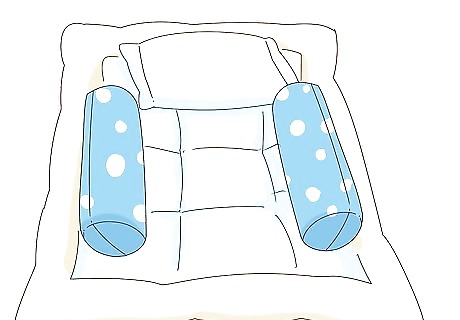
Avoid sheets, quilts, duvets, pillows, and blankets. Whilst it is natural to want to put these items in your baby’s cot, they have the potential to suffocate your baby during the night. As a result, it is best to leave these bedding items out of the cot completely and to rely on the baby’s clothing and swaddle or sleeping bag to keep them warm. Keep these accessories out of your baby’s bed until they graduate to a toddlers cot. This is generally around 18-24 months.
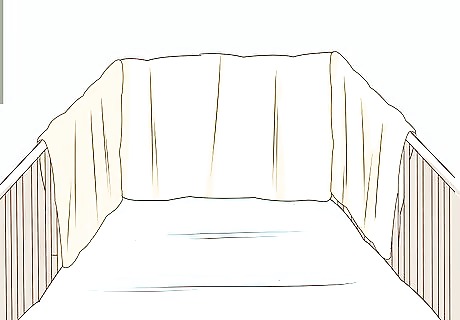
Tuck the fitted sheet in firmly. Choose a fitted sheet that is the correct size for your cot and ensure that all the corners are tucked firmly under the mattress to prevent it from becoming a choking hazard. Avoid using a regular sheet instead of a fitted sheet, as this can come loose if your baby moves during the night. Don’t use as a top sheet, as this has been correlated with increased for Sudden Infant Death Syndrome.
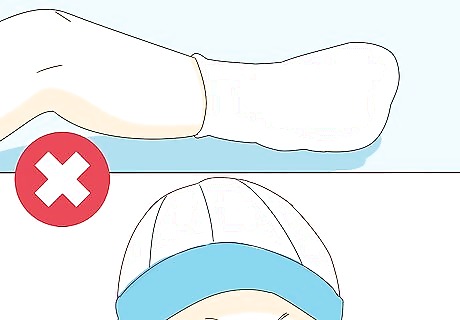
Avoid socks and hats, as these can be a choking risk. Even if it is a cold night, don’t put accessories, such as hats and socks, on your baby. These items have the potential to come loose during the night and have caused choking and suffocation on occasions. If you are worried that your baby’s feet may get cold, choose a 1-piece sleeping suit that has foot compartments.




















Comments
0 comment